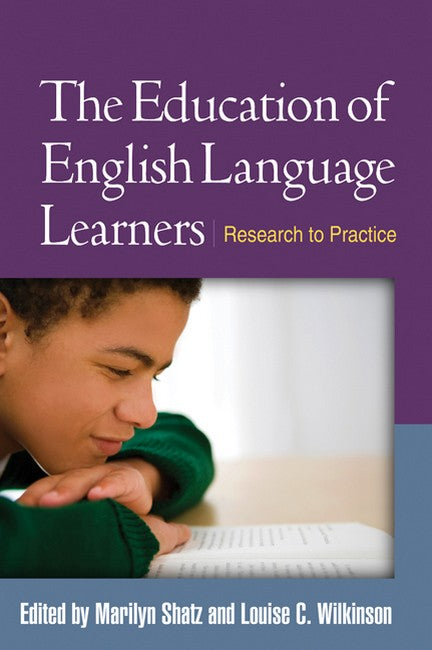Introduction, Marilyn Shatz and Louise C. WilkinsonI. Early Language Experience and School Readiness1. The Brain and Language Acquisition: Variation in Language Knowledge and Readiness for Education, Barbara T. Conboy2. The Process of Acquiring a First and Second Language, Kathryn Kohnert and Giang Pham3. Language Choice and Competence: Code Switching and Issues of Social Identity in Young Bilingual Children, Iliana Reyes and Susan M. Ervin-TrippII. Language and Literacy Principles and Practices in School4. Ways to Words: Learning a Second-Language Vocabulary, Lisa M. Bedore, Elizabeth D. Pena, and Karin Boerger5. The Role of Phonology in Orthographically Different Languages, Ellen H. Newman6. Bilingualism and Cognitive Linkages: Learning to Read in Different Languages, Ellen Bialystok and Kathleen F. Peets7. Learning English as a Second Language, Maria Estela BriskIII. Assessment and Interaction: Working with Children and Families8. Communicative Repertoires and English Language Learners, Betsy Rymes9. Difficulty, Delay, or Disorder: What Makes English Hard for English Language Learners?, Carol Westby and Deborah A. Hwa-Froelich10. Implications for Assessment and Instruction, Alison L. Bailey11. Extended Implications for Practice: Families as Allies, Leslie Reese and Claude Goldenberg12. Recent Research on English Language and Literacy Instruction: What We Have Learned to Guide Practice for English Language Learners in the 21st Century, Diane August, Claude Goldenberg, William M. Saunders, and Cheryl Dressler
This comprehensive volume describes evidence-based strategies for supporting English language learners (ELLs) by promoting meaningful communication and language use across the curriculum. Leading experts explain how and why learning is different for ELLs and pinpoint specific best practices for the classroom, illustrated with vivid examples. Particular attention is given to ways in which learning English is intertwined with learning the student's home language. The book addresses both assessment and instruction for typically developing ELLs and those with language disabilities and disorders. It demonstrates how educators and speech--language professionals can draw on students' linguistic, cognitive, sociocultural, and family resources to help close the achievement gap.

